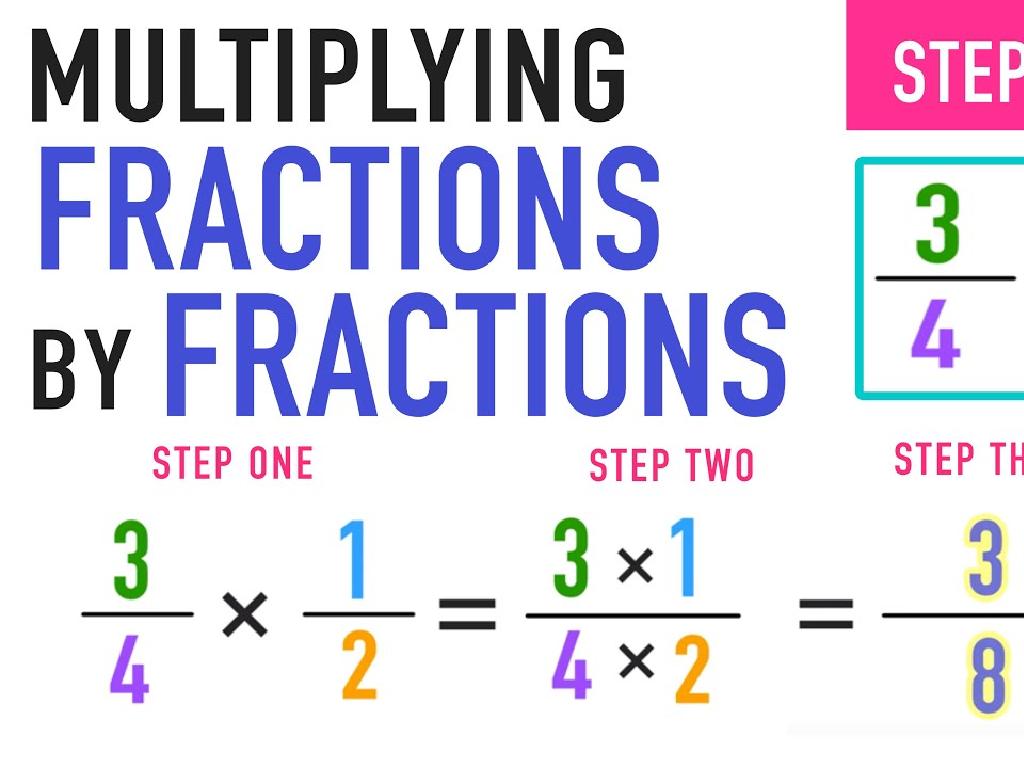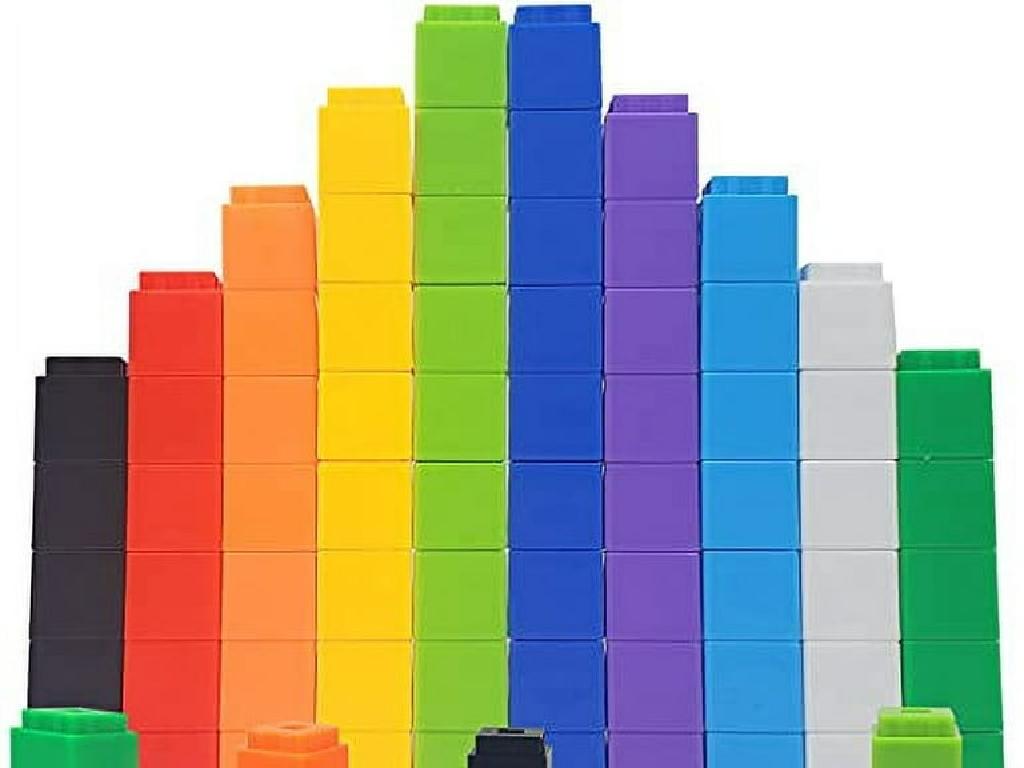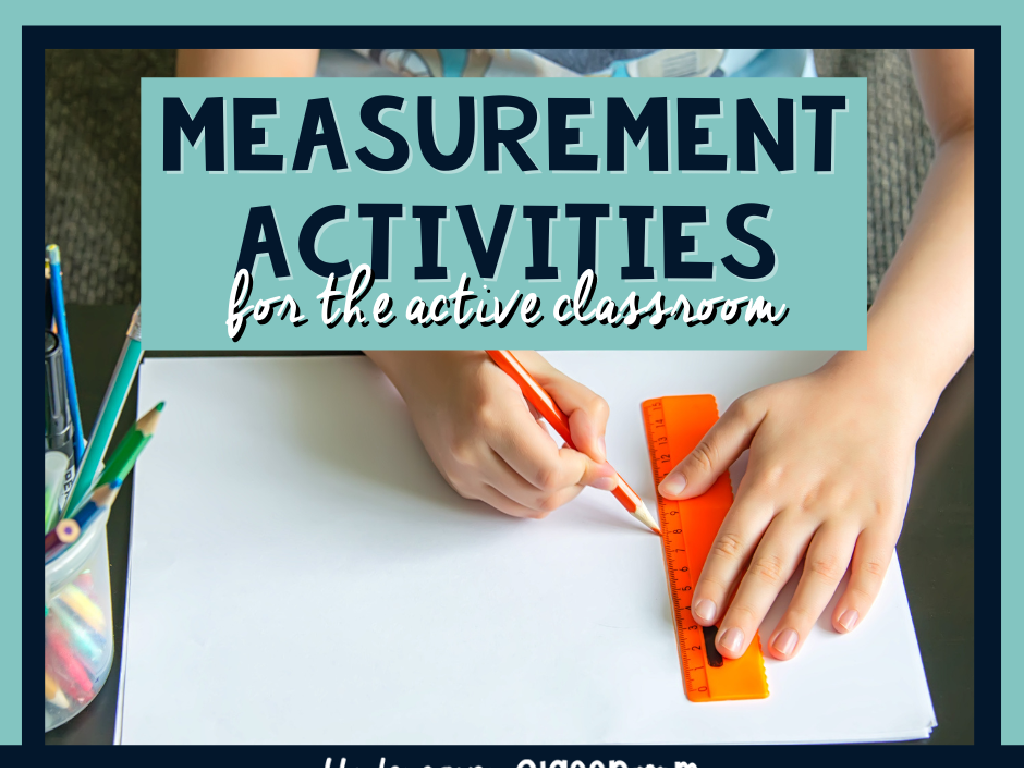Counting Forward - Up To 100
Subject: Math
Grade: First grade
Topic: Counting To 100
Summary: Get ready to master counting forward up to 100 with this engaging first grade math lesson. Students will practice counting aloud, use number charts, play counting games, and participate in creative activities like building a counting train. The lesson introduces skip counting by tens and real-world applications, helping kids understand why counting is important. Hands-on practice and interactive play ensure students build strong number sense and confidence in counting to 100.
Please LOG IN to download the presentation. Access is available to registered users only.
View More Content
Welcome to Counting!
– Greetings First Graders!
– Today’s goal: Count to 100
– We’ll learn to count from 1 all the way to 100
– Counting is fun and useful
– Use counting for tasks like counting toys, steps, or people
– Let’s start our counting adventure
– We’ll count together with fun activities
|
This slide is designed to introduce first graders to the concept of counting forward up to 100. Start the lesson with a warm welcome and an enthusiastic tone to get the students excited about learning to count. Explain that counting is not only a fun activity but also a practical skill they can use in everyday life, such as keeping track of their toys or counting the number of steps they take. Engage them with interactive counting activities, such as counting objects in the classroom or using number charts. Encourage participation and make sure to praise their efforts as they practice counting. The goal is to build a strong foundation for number sense and to ensure that each student feels confident in their ability to count to 100 by the end of the lesson.
Learning to Count Up to 100
– What is counting?
– Counting means saying numbers one by one in the correct order.
– Counting is like climbing stairs
– Imagine each number as a step on a staircase that you go up.
– Counting from 1 to 10
– We’ll start our counting journey with the first ten numbers.
– Practice makes perfect
|
This slide introduces the concept of counting to first graders. Begin by explaining that counting is the action of saying numbers one after another in the correct sequence, just like when climbing stairs, each step is taken one at a time. Demonstrate counting from 1 to 10 with the class, encouraging them to join in and count aloud together. Emphasize the importance of practice in learning to count, and consider using visual aids like number charts or physical objects to count. Plan to have interactive counting activities where students can practice in a fun and engaging way, such as counting items in the classroom, using songs, or playing counting games.
Counting 1 to 20
– Counting after 10 up to 20
– After 10 comes 11, then 12, up to 20
– Practice counting 1 to 20 aloud
– Let’s say the numbers together out loud
– Showing 20 using fingers and toes
– We have 10 fingers, let’s count toes to make 20!
|
This slide is aimed at helping first graders understand the sequence of numbers from 1 to 20. Start by recapping the numbers up to 10, which they are likely familiar with, and then introduce the concept of counting on from 10 to reach 20. Engage the class by counting together aloud, which reinforces their understanding and helps with memorization. To make the concept of ’20’ tangible, encourage the children to use their fingers and toes, making the learning process interactive and fun. This will help them visualize the number 20 as a total of their fingers and toes combined. During the next class, you can review this concept and encourage students to practice counting at home with their family members.
Big Numbers: Counting to 100
– Numbers go beyond 20
– Counting up to 100
– Let’s count together from 1 to 100
– Visualizing 100 items
– Imagine a big jar with 100 candies inside
– Practice makes perfect
– The more we count, the better we get!
|
This slide introduces the concept of large numbers to first graders, emphasizing that numbers continue well past 20, all the way to 100 and beyond. Encourage the students to think about large quantities by visualizing something they are familiar with, like candies. This can make the concept of ‘100’ more tangible. During the lesson, practice counting aloud as a class from 1 to 100 to help solidify their understanding. Use visual aids, such as a number chart or counters, to help students keep track as they count. Reinforce the idea that counting is a skill that improves with practice, and encourage them to practice counting at home as well.
Counting by Tens to 100
– Counting by tens is fast
– Skip count by 10 to reach 100 quickly
– Let’s count: 10, 20, 30, … 100
– Practice together: 10, 20, 30, 40, 50, 60, 70, 80, 90, 100
– Imagine hopping on big stones
– Visualize jumping 10 steps at a time
|
This slide introduces students to the concept of counting by tens, which is a foundational skill in understanding place value and efficient counting. By comparing the counting process to hopping on big stones, it creates a visual and physical metaphor that helps students grasp the concept of skip counting. Encourage the students to count aloud together, reinforcing the pattern and rhythm of counting by tens. This activity can be turned into a physical exercise where students hop or step forward as they count, making the learning experience engaging and kinesthetic.
Practice Time: Counting Together
– Let’s practice counting now
– Count items in our classroom
– How many books? How many pencils?
– Every count takes us closer to 100
– Remember, practice makes perfect!
|
This slide is designed to engage students in a hands-on counting activity within the classroom. Encourage the students to count various objects around them, such as books, pencils, or blocks. This will help them understand the concept of counting in a tangible way. Make sure to walk around the classroom to assist and motivate the students as they count. Offer praise for effort and correct counting. You can suggest different counting activities, such as counting in pairs, counting out loud as a class, or even counting silently and writing down numbers. This practical application reinforces their counting skills and builds confidence in their ability to count to 100.
Counting Forward Game: Journey to 100
– Let’s play a counting game
– Use the game board to move
– Each space on the board is a number
– Roll the dice to count forward
– The number on the dice adds to our count
– Reach 100 with fun and friends
|
This interactive game is designed to help first graders practice counting to 100 in a fun and engaging way. Set up a game board with 100 spaces, labeled from 1 to 100. Students will take turns rolling a dice and moving their game pieces forward the corresponding number of spaces. As they move their pieces, encourage them to say the numbers out loud, reinforcing their counting skills. This activity not only helps with number recognition and counting but also introduces basic addition concepts. Have several game boards available to accommodate smaller groups, ensuring that each child gets plenty of turns to roll the dice and count. The goal is to make it to the end of the board, but the focus should be on enjoying the process of counting and learning together.
Class Activity: Counting Train
– Create a paper car train
– Number the cars 1 to 100
– Each car gets a unique number, starting with 1
– Line up cars in order
– Place the cars to form a train in numerical order
– Choo-choo! Let’s count together
|
This activity is designed to help first graders visualize the sequence of numbers up to 100. Each student will create their own paper car and write a number on it. Once all cars are numbered, they will work together to line them up in the correct order, forming a ‘counting train’. This hands-on activity not only reinforces number recognition and sequencing but also encourages teamwork. As an extension, students can practice skip counting by 2s, 5s, or 10s with the train. Possible variations include using different colors for multiples of certain numbers or creating a ‘caboose’ to mark the end of the train at 100.
Celebrating Our Counting Journey to 100!
– Congratulations on reaching 100!
– Counting’s role in everyday math
– Helps in addition, subtraction, and more
– Counting’s importance in daily life
– Useful for time, money, and quantities
– Keep practicing for mastery
|
This slide is a celebration of the students’ achievement in counting to 100. Emphasize the importance of counting as a foundational math skill that aids in various mathematical operations such as addition and subtraction. Highlight how counting is applied in everyday life, including telling time, handling money, and measuring quantities. Encourage the students to continue practicing counting in fun and engaging ways, such as counting objects they encounter daily or playing counting games, to reinforce their skills and build confidence in their mathematical abilities.





